Article from the section “Calendar of work for gardeners and vegetable gardeners”
With the onset of winter, work in the garden and vegetable garden decreased.
All the basics have already been done: we carried out sanitary pruning of trees and cleared the ground of plant debris, removed the growth of trees and shrubs, excess strawberry tendrils, and diseased plants. Dug up and fertilized
trunk circles. Perennial plants are prepared for winter.If you didn’t manage to do something, you can still catch up at the beginning of December...
Protecting garden trees from frost
Your garden: work of the month.
In December, garden plants have a very important period - the transition to a state of dormancy. It is beneficial for trees and shrubs to go through this period as quickly as possible.
What does frost resistance depend on? fruit and berry crops? Largely from us gardeners. We were delayed in harvesting the trees - winter hardiness decreased, because the trees had less time to prepare for wintering.
If autumn is too much organic matter was poured into the tree trunk - they reduced the winter hardiness of the tree, because organic matter contains a lot of nitrogen, and it prolongs the growing season of plants, leaving them no time to prepare for winter. An even worse result will result if you apply nitrogen fertilizers in excess of the norm in the fall.
The autumn nitrogen norm is no more than 3 g per square meter. m. Trees need it to nourish the roots, which continue to grow in winter.
Prepare cuttings for grafting
In early December, before the onset of severe frosts, you can take cuttings from trees for winter or spring grafting. Store them in a box of sand in a cool place. If there are not many cuttings, you can store them in the refrigerator, wrapping them in a damp cloth and placing them in a plastic bag. In storage, install branches vertically. Cover them with sand.
Cut branches for cuttings from the south side of the crown, from healthy productive trees. The length of the branches is up to 40 cm. Tops that are not ripe, very short branches with close buds are not suitable.
When harvesting annual branches of actinidia, sea buckthorn, honeysuckle, do not confuse the upper end with the lower: make the upper cut straight 1 cm above the bud, and the lower cut oblique - 1.5 cm below the bud.
Actinidia has hidden buds under the bark. Make both cuts - straight and oblique - in the middle of the internodes.
Do not confuse sea buckthorn cuttings from female and male plants. It is better to immediately mark them in any way.
What you didn’t have time to do in the fall can be completed now
If you didn’t manage the sanitary pruning of trees in November, you can continue in the first ten days of December if the frost is below 10 degrees. Cut out dry and diseased branches of pome-bearing species. Set aside stone fruits until spring.
Now the crowns of the trees are free of leaves, it is easier to see the pests that have settled in for the winter: nests from the leaves of lacewings, hawthorns, dried fruits - sources of infection. Cut them with pruning shears or a lopper.
On the bark of trees At the base of trunks, on stumps, at the bottom of fences, buildings, and stacked woodpiles, oviposition of gypsy moths can be found. They are covered with a thin layer of hairs and look like yellowish-gray pads with a diameter of 2-3 cm.
In the spring, at the same time the buds open, small dark caterpillars emerge from the eggs, covered with long hairs, thanks to which they are easily carried by the wind throughout the garden. Each of them can destroy from 12 to 35 leaves. In some years (every 6-10 years), the silkworm can multiply greatly and destroy all the leaves on the trees in the garden.
Using a metal spoon, scrape out the gypsy moth eggs.
When the temperature drops sharply and the absence of snow, the roots may freeze, especially of young trees or low-growing ones (on clonal rootstocks).Mulch the tree trunk circles with compost or humus with a layer of 8-10 cm.
If there is a lot of snow, at temperatures around 0 degrees, shake it off trees of winter varieties that have not lost their leaves. Accumulating on leaves and branches, it can break off branches. First, shake off snow from the lower branches, and then from those located above.
When it snows try to cover strawberries, especially 1-2 year old ones. To retain snow, place branches left over from pruning trees and shrubs, and flower stems around the area. The branches should not be diseased: moniliosis, powdery mildew.
Trample down loose snow in tree trunk circles. Dense snow is an obstacle for mice on their way to the bark of trees and bushes.
Place soil or compost under the base of the berry bushes (5-8 cm layer).
If the stamps are not whitened trees in November, you can do this in December, in frost-free weather. Tie young trees to protect against sunburn and rodents.
In young trees, carefully pull the skeletal branches towards the trunk and tie them with twine or rope. Tie together currant, gooseberry, and Chinese cherry bushes. This will save them from breaking under the weight of snow.
A good protective agent is spraying plants with lime milk. It reduces evaporation, and therefore desiccation of plants, and protects branches from sunburn. Prepare the solution as follows: dissolve 1 kg of lime in 10 liters of water and spray the crowns in frost-free weather.
Check how vegetables are stored in the basement
Constantly monitor the fruits placed in storage. The best temperature for storing most varieties of apples is plus 1-2 degrees. To maintain it, open the vents in the storage during the day and close the vents at night and periodically ventilate the room.
To maintain optimal humidity (85-90 percent), if necessary, place containers of water in the storage. Remove diseased and damaged fruits.
December is the time to hang up your bird feeders.
Winter is a difficult time for birds. Many die from lack of food and cold weather. Gardeners should help their feathered friends by installing feeders in the garden and systematically filling them.
Bird food can be any grain (except buckwheat), sunflower seeds, white bread crumbs. Tits love unsalted lard, cut into small pieces.
The birds will thank you for your care in winter by destroying dangerous garden pests in spring and summer.
Even in December, gardeners will find work
Your garden: work of the month.
In December, for the most zealous summer residents, the season is not yet over, because you can carry out winter sowing, insulate beds of garlic, onions, and perennial vegetables with compost, hang bird feeders, and feed dogs and cats left by their owners at their dachas. But even after completing all this work, there is still time to replenish your agronomic knowledge...
We are drawing up a work plan for the next season
It's also time to think about where and what on the site we will plant next season, i.e. draw up a plan for future sowing and planting.
Correctly designed crop rotation - the first, one might say, the main point in a large list of measures aimed at increasing plant productivity, their resistance to diseases and pests, measures that not only save, but also increase soil fertility.
Continuous cultivation of vegetables leads to the accumulation of pests, diseases characteristic of the crop, and soil depletion.When changing crops, the negative consequences are leveled out; compliance with crop rotation allows you to annually obtain high yields of healthy, pesticide-free vegetables.
Planning is essential also in order to decide how many seeds, fertilizers, and seedling soils to buy.
Let's take a notebook and draw a plan for our garden. Having numbered the beds, we will select a crop for each, taking into account the previous crops and how they were fertilized. It’s ideal if we can remember what vegetables grew in the beds not only last season, but also 2-3 years ago.
Let's start planning for the next season with the largest vegetables.
- After potatoes You can plant any cabbage, and after the cabbage - potatoes or tomatoes, cucumbers.
- Occupy the tomato bed cucumbers or zucchini, pumpkin, eggplant, peppers, tomatoes in the next season in place of cucumbers.
- Onions are good will feel after beans, peas, daikon or radish.
- Carrots may well take over the former onion bed, and beets fit the bill in all respects after peppers.
- Radishes in spring sow in the inter-rows of garlic, carrot, beet beds.
- Green crops, peas, onions on a feather can become a frame for a strawberry plot.
We will try to save the notebook so that in the next seasons we can draw up crop rotation not from memory, but according to the scheme. We will try not to return not only the crop itself, but also other plants of the family to its original place before 3-4 years.
For example, after potatoes we don’t plant:
- tomatoes
- pepper
- eggplant
- physalis
after cabbage:
- radish
- daikon
- radish
after the bow:
- garlic
after cucumbers:
- zucchini
- pumpkin, etc.
In the notebook with a crop rotation scheme, other entries may later find a place: the time of sowing or planting seedlings, when and with what the plants were fertilized, processed, what harvest was obtained, etc.
In a separate column, you can enter the costs of purchasing seeds, fertilizers, growth stimulants, so that at the end of the season you can balance the debit with the credit and understand how economically profitable our beds are.
Although for many summer residents, what is more important is not the profit received from the garden, but the environmental cleanliness and taste of the grown fruits.
Let's finally go shopping
While we have time, let's go shopping in the countryside in December. You can already buy seeds of crops that remain viable for a long time: cabbage, tomatoes, cucumbers, zucchini, pumpkin, peppers, eggplants, peas, beans.
This way we will save a little, because the seeds of the new harvest will most likely cost more.
But it is better to buy seeds of carrots, onions, and green crops later - from fresh batches, since they do not retain high germination capacity for long.
It's time to prepare the soil for seedlings
There is still a long way to go before sowing seeds for seedlings, but you already need to take care of the soil mixtures. To free the soil prepared for seedlings from the supply of weed seeds, it is brought from frost to warmth, kept for several days, creating conditions for the germination of weed seeds, and again taken out into the cold, where the seedlings will die.
If you repeat this operation several times, after sowing seeds for seedlings in soil treated in this way, you will not have to guess whether the weeds have sprouted or the vegetables have sprouted.
Low temperatures will also help free the soil from pests and pathogens.
It is also advisable to check in advance whether the prepared (or purchased) soil is suitable for growing seedlings. And it’s better if the experience is not for the sake of experience. Sow seeds of lettuce or dill, spinach or Chinese cabbage into bowls filled with seedling mixture.
Let's wait for the shoots and let's watch them. If they develop normally, then the soil will be suitable for growing vegetable seedlings. True, we must take into account that the well-being of plants is also influenced by illumination, temperature and humidity of the air and soil.
Therefore it would be good for a vegetable garden, equip additional lighting on the windowsill, protect pots or boxes from the cold air of windows and hot streams from radiators. Having created favorable conditions, you can even throw a few cucumber seeds into the soil to get the first fruits from your windowsill in February.
We continue to kick out onion, parsley, celery, chard, sorrel. You can plant small beet roots and a few cloves of garlic in pots. In winter, any greenery brings joy and vitamins. Fresh herbs will be very useful for decorating the New Year's table.
What do flower growers do in December?
Your flower garden: work of the month.
Flower growers have their work cut out for them even in winter. When visiting the dacha, we additionally sprinkle leaves, compost on perennials and bulbous plants, because there is not always a lot of snow in December.
Therefore you must always have We have material in stock for additional covering of perennials in case of severe snowless frosts. If enough snow falls, we will additionally cover our flower beds by shoveling it from the paths. The thicker the layer of snow, the greater the chances of a safe winter for our pets.
We will tie the columnar crowns of thujas and junipers with twine so that their branches do not break off under the weight of snow or ice.
There is nothing more we can do to help our pets. Let's hope for their resilience and the mercy of nature.
At the beginning of winter we switch to working inside the house
And we will turn our attention to indoor plants. Some of them can delight you with flowering in winter.
Won't stop Saintpaulia flowering that began in autumn. If there was no extreme heat in the summer, then Uzambara violets seem to thank you for this with more and more flower stalks. To make Saintpaulias bloom longer, we artificially lengthen the day for them to 12 hours.
Taking a break from summer, Eucharis and Valotta have bloomed, and on the bright windowsills the hibiscus that has grown over the summer is blooming new flowers every day. The “beaks” of peduncles have already appeared on the hippeastrum bulbs, which have safely passed the cooling period in the autumn garden.
Bulbs that spent summer in the room, a little late. To ensure that hippeastrums not only bloom well, but also gain strength for flowering next season, we will transplant the plants into fresh soil mixture.
Carefully shake the bulb out of the pot, remove the old soil, trying to preserve the roots as much as possible, place it in a new pot, the diameter of which should be 2-3 cm larger than the diameter of the bulb, and fill it with a mixture of turf soil, humus, peat and sand (2:1 :1:1). The bulb should be only 2/3 or half immersed in the soil.
We constantly check unawakened hippeastrums. As soon as the inflorescence “bends” at the top of the bulb, we expose the pot to the light and begin to water it.
December is the peak decorativeness of zygocacti (Decembrists). But in order for them to please with abundant flowering, they need coolness - no higher than 16 degrees.Sharp temperature fluctuations during this period are unacceptable, as are other stresses: cutting cuttings, moving from place to place.
Need some coolness and Persian cyclamen blooming in winter - 14-18 degrees. We water this tuberous rhizomatous plant, avoiding overdrying and stagnation of water in the pot. Water should not get into the middle of the rosette of leaves, so it is better to pour it into a tray.
Blooming in winter We support the plants with fertilizing: twice a month we water them with weak solutions (1 g per liter of water) of complete or complex fertilizer.
In January, we plant gloxinia and begonia tubers in a mixture of leaf soil, peat and sand, find a bright place for them and water them moderately until the sprouts appear.
But most indoor plants are not ready to bloom in December. They suffer from lack of light, too warm and dry air. Roses, geraniums, fuchsias (and not only them) lose their leaves in such conditions, their shoots stretch out in search of light. Their plight can be alleviated by lowering the temperature or adding additional lighting.
We make sure that on frosty days the root ball of plants placed on windowsills and floors does not become overcooled. It would be nice to place each pot on a wooden stand. We regularly spray the plants and wash them in the shower, thereby trying to improve the winter microclimate at least a little.
Other articles in this series:
- Work of gardeners, vegetable gardeners and flower growers in January.
- Work of gardeners, gardeners and flower growers in February.
- Work of gardeners, gardeners and flower growers in March.
- Work of gardeners, gardeners and flower growers in April.
- Works of gardeners, vegetable gardeners and flower growers in May.
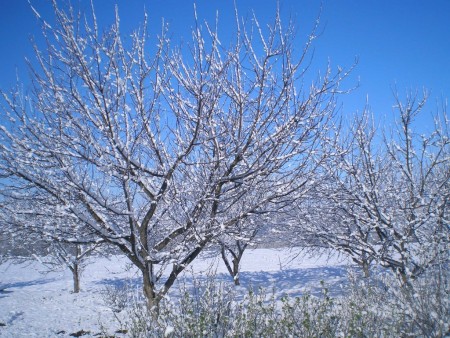

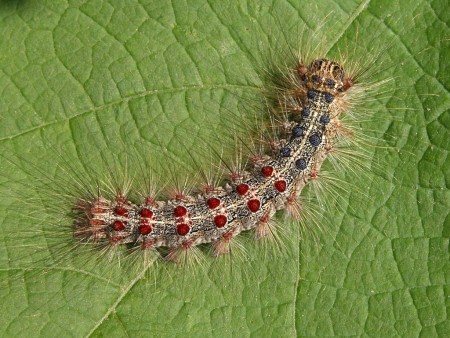
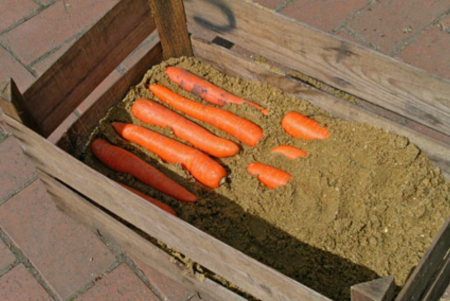
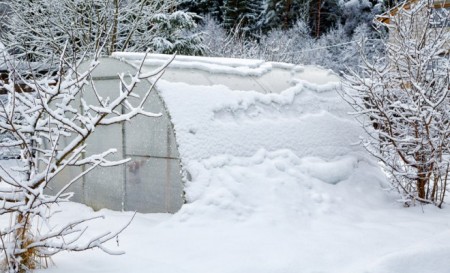
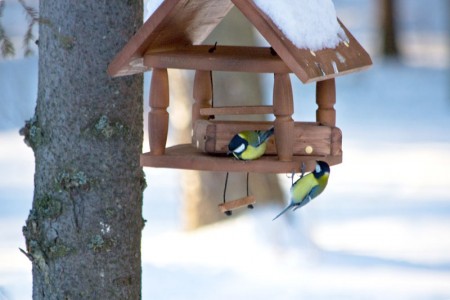
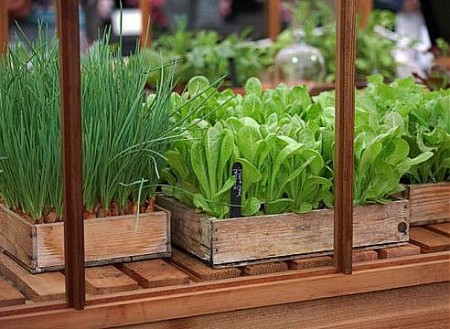
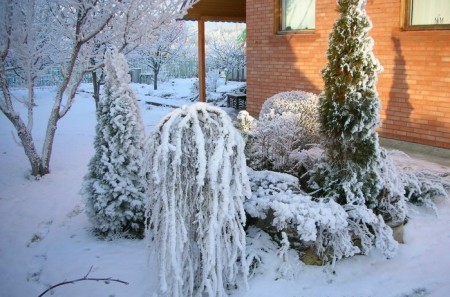
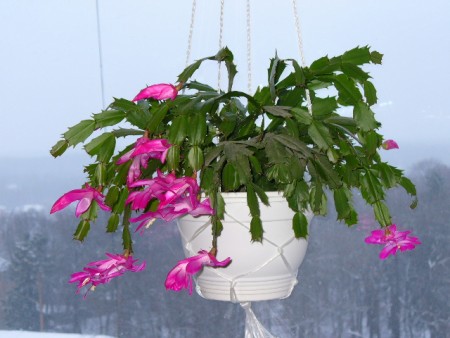


 (5 ratings, average: 3,60 out of 5)
(5 ratings, average: 3,60 out of 5) CUCUMBERS NEVER GET SICK, I'VE BEEN USING ONLY THIS FOR 40 YEARS! I SHARE A SECRET WITH YOU, CUCUMBERS ARE LIKE THE PICTURE!
CUCUMBERS NEVER GET SICK, I'VE BEEN USING ONLY THIS FOR 40 YEARS! I SHARE A SECRET WITH YOU, CUCUMBERS ARE LIKE THE PICTURE! You can dig a bucket of potatoes from each bush. Do you think these are fairy tales? Watch the video
You can dig a bucket of potatoes from each bush. Do you think these are fairy tales? Watch the video
 How our fellow gardeners work in Korea. There is a lot to learn and just fun to watch.
How our fellow gardeners work in Korea. There is a lot to learn and just fun to watch. Eye trainer. The author claims that with daily viewing, vision is restored. They don't charge money for views.
Eye trainer. The author claims that with daily viewing, vision is restored. They don't charge money for views. A 3-ingredient cake recipe in 30 minutes is better than Napoleon. Simple and very tasty.
A 3-ingredient cake recipe in 30 minutes is better than Napoleon. Simple and very tasty. Therapeutic exercises for cervical osteochondrosis. A complete set of exercises.
Therapeutic exercises for cervical osteochondrosis. A complete set of exercises. Which indoor plants match your zodiac sign?
Which indoor plants match your zodiac sign? What about them? Excursion to German dachas.
What about them? Excursion to German dachas.
Snow is a great helper for a summer resident. Sometimes, when there is little snow in the winter, you have to use different materials for mulching